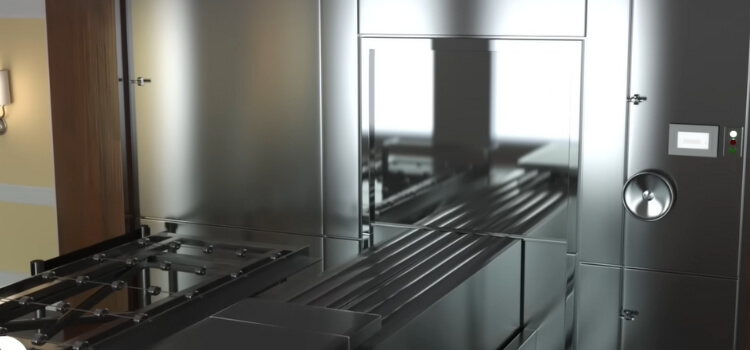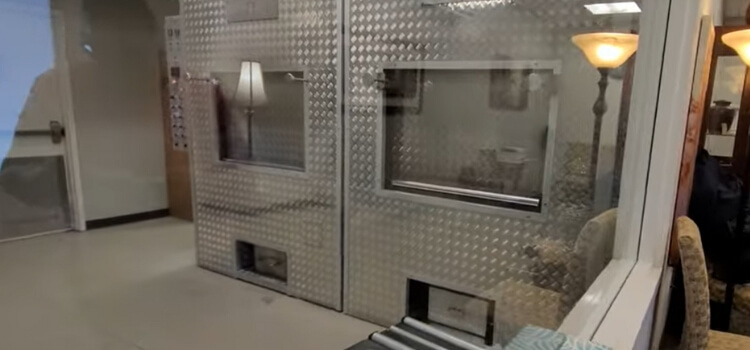As an Amazon Associate, I earn from qualifying purchases
A cremation oven typically reaches temperatures between 1400°F to 1800°F during the cremation process. The intense heat is necessary to efficiently break down the body’s organic matter.
This controlled high temperature ensures thorough cremation and reduces the remains to bone fragments, which are then processed into ashes. The oven is designed to maintain a consistent and extreme heat level throughout the process, allowing for a respectful and dignified transformation of the deceased.
Understanding the significance of this heat level in the cremation process provides insight into the technical and emotional aspects of this unique and traditional practice.

The Cremation Process
When it comes to cremation ovens, understanding the heat generation process is crucial. Let’s delve into the mechanism behind how these ovens reach the extreme temperatures required for cremation.
Fuel Source
Cremation ovens typically use natural gas or propane as their primary fuel sources. These gases are highly efficient in generating the intense heat necessary for cremation.
Mechanism Of Heat Generation
The combustion of natural gas or propane within the oven’s burners produces the heat. This heat is distributed evenly throughout the oven chamber, ensuring thorough cremation.
Heat Generation In Cremation Ovens
The temperature inside a cremation oven is a subject of curiosity for many. Understanding the intense heat within these ovens can provide insight into the cremation process and the equipment used.
Measuring The Heat
The temperature inside a cremation oven typically reaches between 1400°F and 1800°F. This extreme heat is necessary to effectively and efficiently break down the deceased person’s body into cremated remains.
Factors Affecting Temperature
Several factors can influence the temperature inside a cremation oven, including the type of fuel used, the oven’s design, and the deceased person’s size and weight. The combustion chamber’s insulation and the control systems also play crucial roles in maintaining the desired heat levels.
Temperature Inside A Cremation Oven
It’s crucial to comprehend a cremation oven’s heat output and how it compares to other furnaces. This comparative heat analysis sheds light on the temperatures reached in a cremation oven versus those in other types of furnaces, providing valuable insights into the immense heat involved in the cremation process.
Cremation Oven Vs. Other Furnaces
The heat generated in a cremation oven surpasses that of most other furnaces. The temperatures in a cremation oven typically range from 1600 to 1800 degrees Fahrenheit, whereas other furnaces, such as industrial and commercial ones, generally operate at lower temperatures, often not exceeding 1500 degrees Fahrenheit.
Heat Intensity Comparison
Comparing the heat intensity of a cremation oven with other furnaces reveals the exceptional level of heat required for the cremation process. The intense heat in a cremation oven is necessary to effectively and efficiently break down the body into ashes, ensuring a respectful and thorough cremation.
Comparative Heat Analysis
Comparative Heat Analysis reveals that a cremation oven can reach temperatures exceeding 1,400-1,800 degrees Fahrenheit. This extreme heat ensures efficient cremation processes, breaking down organic matter to ashes.
Standard Heat Thresholds
Cremation ovens reach temperatures of around 1,400 to 1,800 degrees Fahrenheit.
This extreme heat is necessary to effectively break down the body into ashes.
Ensuring Operational Safety
Strict regulations are in place to ensure the safe operation of cremation ovens.
- Regular maintenance checks are conducted to monitor equipment safety.
- Operators are trained to follow proper procedures and handle the cremation process safely.
Protective gear such as heat-resistant gloves and masks are worn to prevent injuries.
Regulations And Safety Measures
Cremation ovens reach temperatures of 1,400-1,800 degrees Fahrenheit for efficient body disposal. Regulations mandate safety measures to prevent accidents and ensure proper handling of remains.
When it comes to cremation, most people are unaware of the technological advancements that have been made in recent years. One of the most significant developments has been in the area of heat control and efficiency improvements. In this section, we’ll discuss how these innovations have impacted the temperature of cremation ovens.
Advancements In Heat Control
Modern cremation ovens are equipped with state-of-the-art temperature control systems that allow for precise adjustments to the heat output. This ensures that the oven stays at a consistent temperature throughout the entire cremation process. The temperature inside the oven can reach up to 1800 degrees Fahrenheit, which is hot enough to reduce the body to ash within a few hours.
Efficiency Improvements
Efficiency improvements have made cremation a more eco-friendly option for end-of-life services. Cremation ovens now use less energy and emit fewer harmful emissions than ever before. This is due in part to the use of natural gas and other clean-burning fuels in the cremation process. Additionally, some cremation ovens now come equipped with afterburners that help to reduce emissions even further.
| Advantages of Innovations in Cremation Technology |
|---|
|
In conclusion, innovations in cremation technology have made the process of cremation more efficient, eco-friendly, and safe. With advancements in heat control and efficiency improvements, cremation ovens are now capable of reaching temperatures of up to 1800 degrees Fahrenheit while emitting fewer harmful emissions. These advancements have made cremation a more viable option for those looking for a sustainable and cost-effective way to lay their loved ones to rest.

Innovations In Cremation Technology
Cremation ovens reach temperatures between 1400 to 1800 degrees Fahrenheit, ensuring efficient and thorough cremation. Innovations in cremation technology have led to the development of advanced ovens that utilize clean and environmentally friendly processes, offering a more sustainable alternative to traditional methods.
The environmental impact of cremation heat is a significant concern in the context of energy consumption and emission control.
Energy Consumption
Cremation ovens, also known as retorts, require high energy consumption to reach and maintain the temperatures necessary for the cremation process. The ovens typically operate at temperatures between 1,400 and 1,800 degrees Fahrenheit, which demands a considerable amount of energy. This process contributes to the environmental impact due to the high energy consumption involved.
Emission Control
Emission control is a crucial aspect in mitigating the environmental impact of cremation heat. The high temperatures used in cremation produce emissions such as carbon dioxide, particulate matter, and other pollutants. To address this, crematoriums are equipped with emission control systems that help minimize the release of harmful substances into the atmosphere. These systems play a vital role in reducing the environmental impact of cremation heat.
In summary, the environmental impact of cremation heat is closely tied to energy consumption and emission control, both of which are critical considerations in addressing the environmental effects of cremation processes.
Environmental Impact Of Cremation Heat
The intense heat of a cremation oven can reach temperatures ranging from 1400 to 1800 degrees Fahrenheit. This high heat ensures the efficient breakdown of organic matter during the cremation process, minimizing the environmental impact of cremation heat emissions.
Sustainability Considerations
Cremation ovens can be optimized for energy efficiency to reduce environmental impact.
Eco-friendly cremation practices are gaining importance in the industry.
Technological Developments
Advanced technologies are enhancing cremation oven performance.
Automation is streamlining the cremation process for increased efficiency.
Frequently Asked Questions
It takes around 2-3 hours for a body to cremate at a temperature of 1,400-1,800 degrees Fahrenheit.
Cremation ovens typically reach temperatures between 1400-1800 degrees Fahrenheit for efficient cremation processes.
Yes, a cremation oven operates at higher temperatures than a bonfire to ensure complete cremation.
The intense heat generated by a cremation oven is contained within the chamber, so it’s not felt externally.
Conclusion
The high temperatures in a cremation oven allow for efficient and thorough cremation processes. The intense heat ensures complete combustion of the body, leaving behind only bone fragments. Understanding the temperature of a cremation oven provides insight into the cremation process and its significance in various cultures worldwide.
As an Amazon Associate, I earn from qualifying purchases
Leave a Reply